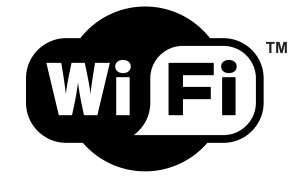 An article from my colleague, Joey Pepka, of Peptronics
An article from my colleague, Joey Pepka, of Peptronics
Wi-Fi hotspots in coffee shops, libraries, airports, hotels, universities, and other public places are convenient, but often they’re not secure. If you connect to a Wi-Fi network and send information through websites or mobile apps, someone else might be able to see it. Here are some ways to safely use public Wi-Fi when you’re out and about. While there isn’t much you can do to make a public Wi-Fi network more secure, you can do some things to help keep your data secure on public Wi-Fi:
Connect to websites securely. If you see https in the web address, you have a secure connection to the website. But using https does not mean a website is legit. Scammers know how to encrypt sites, too. They know that people assume https means a website is safe — so they’ve started adding it to their websites, as well.
Consider using a VPN app. Some virtual private networks, known as VPNs, offer encryption. Learn more about VPN apps and what to know before you download one.
Use your mobile data. Your mobile data is usually encrypted. If you’re on the go, don’t have the option of using a secure website, and have no VPN encryption, consider using your mobile data instead of Wi-Fi. This is a good option when you’re putting personal information into apps, since it can be hard to know if they’re encrypted.
Don’t access your personal or financial information. Always assume a public Wi-Fi network isn’t secure.
Log in or send personal information only to websites you know are fully encrypted. To be secure, your entire visit to each site should be encrypted (meaning that the URL starts with https) — from the time you log in to the site until you log out. If you think you’re logged in to an encrypted site but find yourself on an unencrypted page, log out right away.
Don’t stay permanently signed into accounts. When you’ve finished using an account, log out.
Don’t use the same password on different websites. It could give someone who gains access to one of your accounts access to many of your accounts.
Pay attention to warnings. Many web browsers alert you before you visit a scammy website or download malicious programs. Don’t ignore those warnings. Also keep your browser and security software up to date.
Change your device’s settings so it doesn’t automatically connect to nearby Wi-Fi. That way, you have more control over when and how you use public Wi-Fi.
https://consumer.ftc.gov/articles/how-safely-use-public-wi-fi-networks
ShareNOV




About the Author:
I am a cybersecurity and IT instructor, cybersecurity analyst, pen-tester, trainer, and speaker. I am an owner of the WyzCo Group Inc. In addition to consulting on security products and services, I also conduct security audits, compliance audits, vulnerability assessments and penetration tests. I also teach Cybersecurity Awareness Training classes. I work as an information technology and cybersecurity instructor for several training and certification organizations. I have worked in corporate, military, government, and workforce development training environments I am a frequent speaker at professional conferences such as the Minnesota Bloggers Conference, Secure360 Security Conference in 2016, 2017, 2018, 2019, the (ISC)2 World Congress 2016, and the ISSA International Conference 2017, and many local community organizations, including Chambers of Commerce, SCORE, and several school districts. I have been blogging on cybersecurity since 2006 at http://wyzguyscybersecurity.com